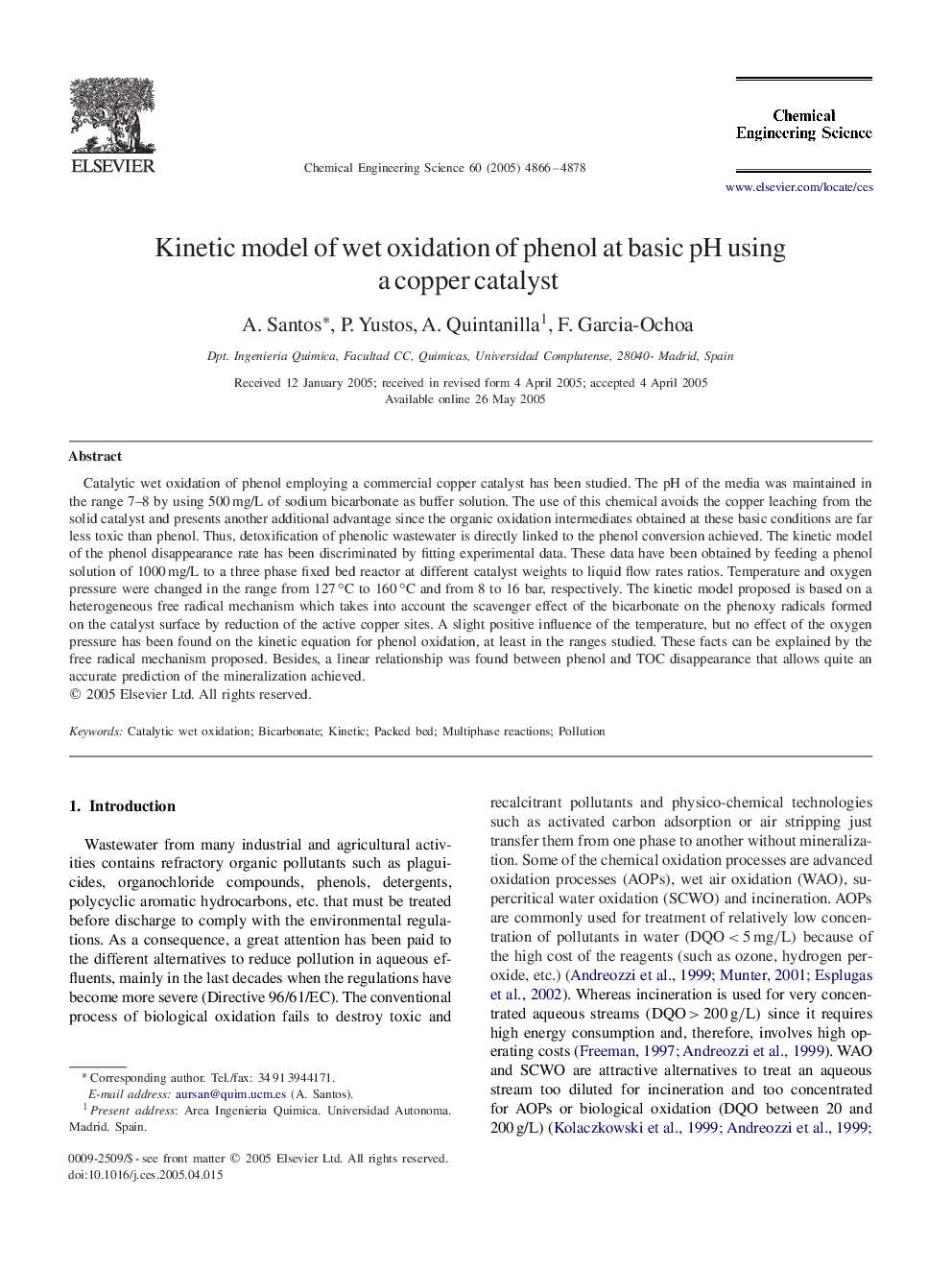| Article ID | Journal | Published Year | Pages | File Type |
|---|---|---|---|---|
| 159407 | Chemical Engineering Science | 2005 | 13 Pages |
Catalytic wet oxidation of phenol employing a commercial copper catalyst has been studied. The pH of the media was maintained in the range 7–8 by using 500 mg/L of sodium bicarbonate as buffer solution. The use of this chemical avoids the copper leaching from the solid catalyst and presents another additional advantage since the organic oxidation intermediates obtained at these basic conditions are far less toxic than phenol. Thus, detoxification of phenolic wastewater is directly linked to the phenol conversion achieved. The kinetic model of the phenol disappearance rate has been discriminated by fitting experimental data. These data have been obtained by feeding a phenol solution of 1000 mg/L to a three phase fixed bed reactor at different catalyst weights to liquid flow rates ratios. Temperature and oxygen pressure were changed in the range from 127∘C to 160∘C and from 8 to 16 bar, respectively. The kinetic model proposed is based on a heterogeneous free radical mechanism which takes into account the scavenger effect of the bicarbonate on the phenoxy radicals formed on the catalyst surface by reduction of the active copper sites. A slight positive influence of the temperature, but no effect of the oxygen pressure has been found on the kinetic equation for phenol oxidation, at least in the ranges studied. These facts can be explained by the free radical mechanism proposed. Besides, a linear relationship was found between phenol and TOC disappearance that allows quite an accurate prediction of the mineralization achieved.
